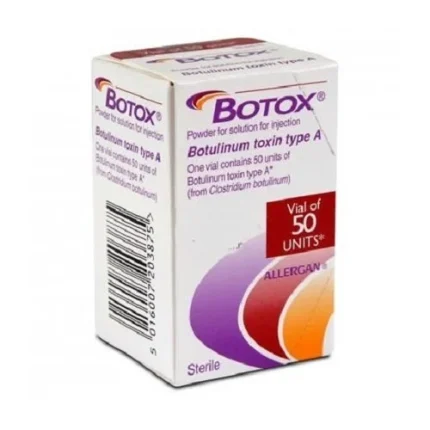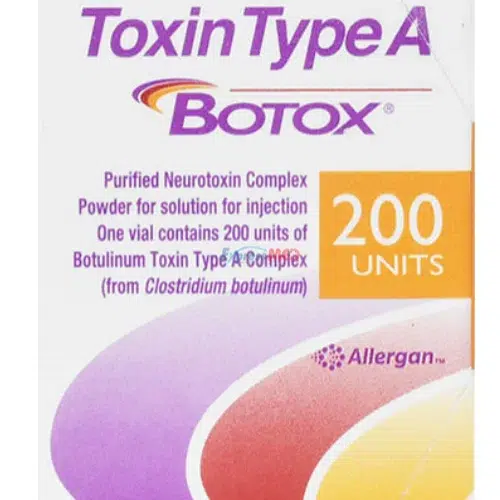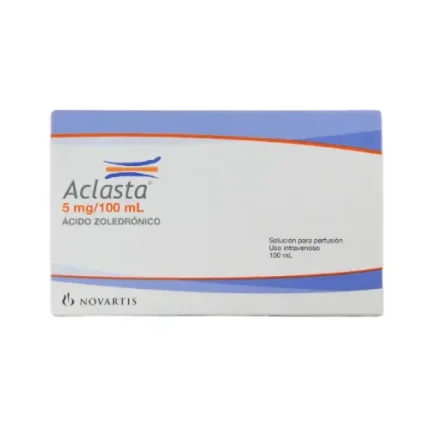Introduction to Botox 200IU Injection
Botox 200IU Injection contains Botulinum Toxin Type A as its active ingredient. It is classified as a neurotoxin, which partially blocks nerve impulses, reduces excessive muscle contractions, and relaxes muscles. This medication is used for various conditions, including chronic migraines, where it may block pain signals and prevent migraines. When injected into the skin, it reduces sweat production by affecting the sweat glands. When injected into the bladder wall, it prevents urinary incontinence by inhibiting uncontrolled bladder muscle contractions. Botulinum Toxin Type A treats various conditions by being injected directly into muscles, the bladder wall, or deep into the skin. It helps manage muscle spasms in children and adults, including those with cerebral palsy, prevents headaches in adults with chronic migraines, and reduces symptoms of urinary incontinence and overactive bladder. Additionally, this medication can control excessive underarm sweating and temporarily improve the appearance of facial lines.
Do not use Botox 200IU Injection if you are allergic to botulinum toxin Type A or any of its ingredients. Avoid this medication if you are pregnant, breastfeeding, or have an active infection at the injection site. For urinary incontinence treatment, do not use it if you have a urinary tract infection, cannot empty your bladder without a catheter, or are unwilling to use a catheter when necessary. Before starting treatment, inform your doctor if you have a history of swallowing difficulties or aspiration of food into the lungs, especially when treating muscle spasms in the neck and shoulders. Additionally, inform your doctor if you are 65 years or older and have serious underlying illnesses, muscle-related conditions, nervous system disorders, significant muscle weakness, or muscle wasting. Notify your doctor if you have had previous surgery in the target area, adverse reactions to injections, inflammation at the injection site, or cardiovascular disease. Report to your doctor if you have a history of seizures, closed-angle glaucoma or its risk factors, upcoming surgery, or are taking blood-thinning medication. Consult with a healthcare provider for further guidance.
Uses of Botox 200IU Injection
- Treatment of overactive bladder (OAB) with symptoms of urge urinary incontinence, urgency, and frequency, in adults
- Prophylaxis of headaches in adult patients with chronic migraine
- Treatment of spasticity (abnormal increase in muscle) in adult patients
- Treatment of cervical dystonia in adult patients
- Treatment of severe axillary hyperhidrosis (increased amount of sweat production) in adult
- Treatment of blepharospasm (abnormal spasm of eyes) associated with dystonia in patients
- Treatment of strabismus (abnormal alignment of the eyes) in patients
Therapeutic Effects of Botox 200IU Injection
Botox 200IU Injection interacts with proteins in the muscles and exocrine glands, blocking the release of acetylcholine (ACh) into the space between neurons. This process inhibits the overactivity of cholinergic nerves and reduces cholinergic transmission. When injected locally, it suppresses overactive nerves, alleviating spasms and various neurological conditions.
Interaction of Botox 200IU Injection with other drugs
Let your doctor know about all the medications you are currently taking or have taken in the past, including prescription drugs, over-the-counter medicines, nutritional or vitamin supplements, and herbal products. Some medications may interact with Botox 200IU Injection and cause unwanted side effects.
More Information about Botox 200IU Injection
- Keep out of sight and reach of pets and children.
- Do not freeze the medicine.
- Store in a refrigerator (2°C – 8°C), or store in a freezer (-5°C to -20°C).
How to consume Botox 200IU Injection
A healthcare professional will administer Botox 200IU Injection to you in a hospital setting. It is typically injected into muscles, the bladder wall, or the skin. Your doctor will determine the appropriate dose, route of administration, and frequency based on your condition and other factors.
Safety Advices

Pregnancy
It is unsafe to consume Injection during pregnancy. Notify your doctor if you are pregnant, planning to get pregnant, or think you may be pregnant before starting the treatment.

Breast Feeding
It is unsafe to consume Injection during breastfeeding. Notify your doctor if you are breastfeeding before starting the treatment.

Lungs
It is unknown whether Injection is safe for patients with lung problems. Notify your physician if you have any lung disease before starting the treatment. Contact your doctor if you experience any lung-related symptoms.

Liver
It is unknown whether Injection is safe for patients with liver problems. Notify your physician if you have any liver disease before starting the treatment. Contact your doctor if you experience any liver-related symptoms.

Alcohol
Avoid consuming alcohol while taking Injection as it can decrease blood pressure and raise side effects.

Driving
Do not drive or operate machinery because Injection can cause dizziness, drowsiness, or tiredness.
Side Effects
Side effects are unwanted symptoms caused by medicines. Even though all medicines cause side effects, not everyone gets them.
Serious
- Dizziness
- Upper respiratory infection
- Urinary tract infection
- Low urine output
- Difficulty swallowing, speaking, or breathing.
- Allergic reactions
Common
- Irritation, pain, or bleeding at the area of injection
- A sprain in the ligament
- Hypertonia
- Pruritus, dermatitis, and rash
- Muscle weakness and pain in extremities
- Fever
- Dry mouth and nausea
Word of Advice
Heart patients should use Injection with caution and inform their doctor about all underlying medical conditions. Do not stop the medication unless your doctor advises. Possible side effects of BOTOX injections include infection, pain, swelling, sensitivity, tenderness, redness, and bleeding at the injection site. Overuse or high doses may reduce effectiveness and lead to the production of antibodies.
FAQs
Q 1. How to manage the side effects of Botox 200IU Injection?
To manage the side effects of Botox 200IU Injection, apply cold compresses to injection sites for swelling and discomfort. Seek immediate medical attention if you experience muscle weakness or difficulty swallowing. Inform your healthcare provider about eyelid drooping and report any other side effects to them for guidance. Follow their instructions for personalized care.
Q 2. Can you take Botox 200IU Injection when pregnant?
It is unsafe to consume Botox 200IU Injection if you are pregnant. Consult your medical professional regarding the use of during pregnancy. The potential benefits and risks should be carefully assessed.
Q 3. What are the side effects of Botox 200IU Injection?
Common side effects of Botox 200IU Injection include irritation, pain or bleeding in the area, injection A sprain in the ligament, hypertonia, pruritus, dermatitis and rash, muscle weakness, and pain in extremities, fever, dry mouth, and nausea. It is crucial to consult your doctor for any concerns or persistent side effects.
Fact Box
Molecule Name: Botulinum Toxin Type A
Pharmacological class: Dietary supplement
Therapeutic class: Neurology,Dermatology
Indications:
1. Treatment of overactive bladder (OAB) with symptoms of urge urinary incontinence, urgency, and frequency, in adults
2. Prophylaxis of headaches in adult patients with chronic migraine
3. Treatment of spasticity (abnormal increase in muscle) in adult patients
4. Treatment of cervical dystonia in adult patients
5. Treatment of severe axillary hyperhidrosis (increased amount of sweat production) in adult
6. Treatment of blepharospasm (abnormal spasm of eyes) associated with dystonia in patients
7. Treatment of strabismus (abnormal alignment of the eyes) in patients

 MEDICINES
MEDICINES PATIENT ASSISTANCE PROGRAMS
PATIENT ASSISTANCE PROGRAMS IMPORTED MEDICINES
IMPORTED MEDICINES CONTACT US
CONTACT US Upload
Upload












Reviews
There are no reviews yet.